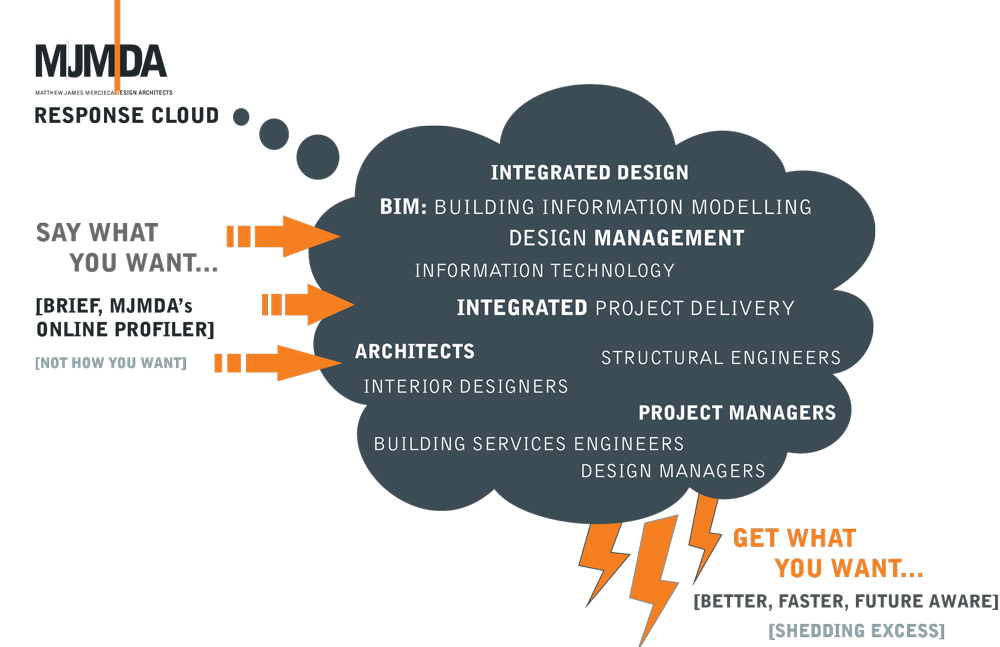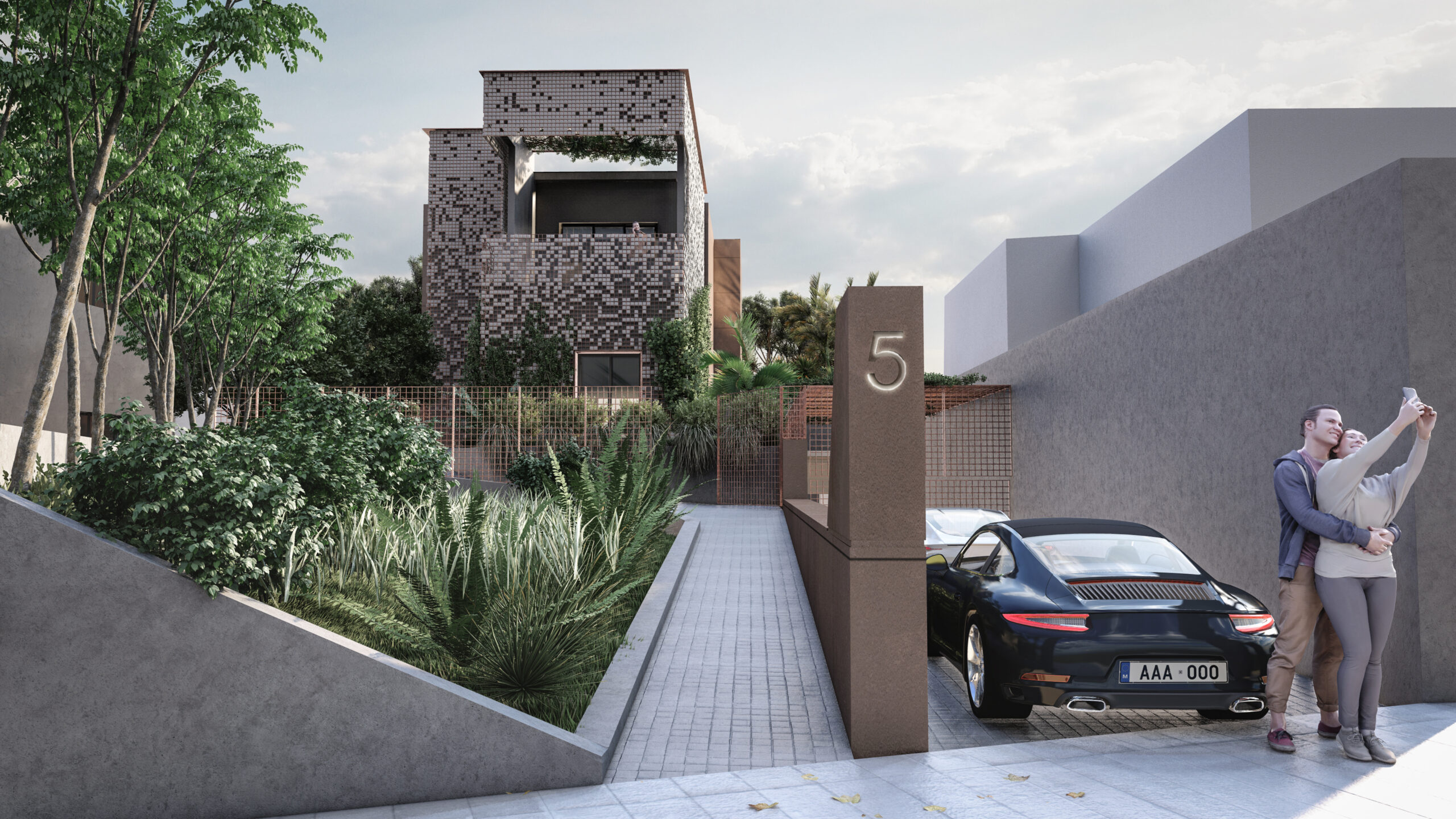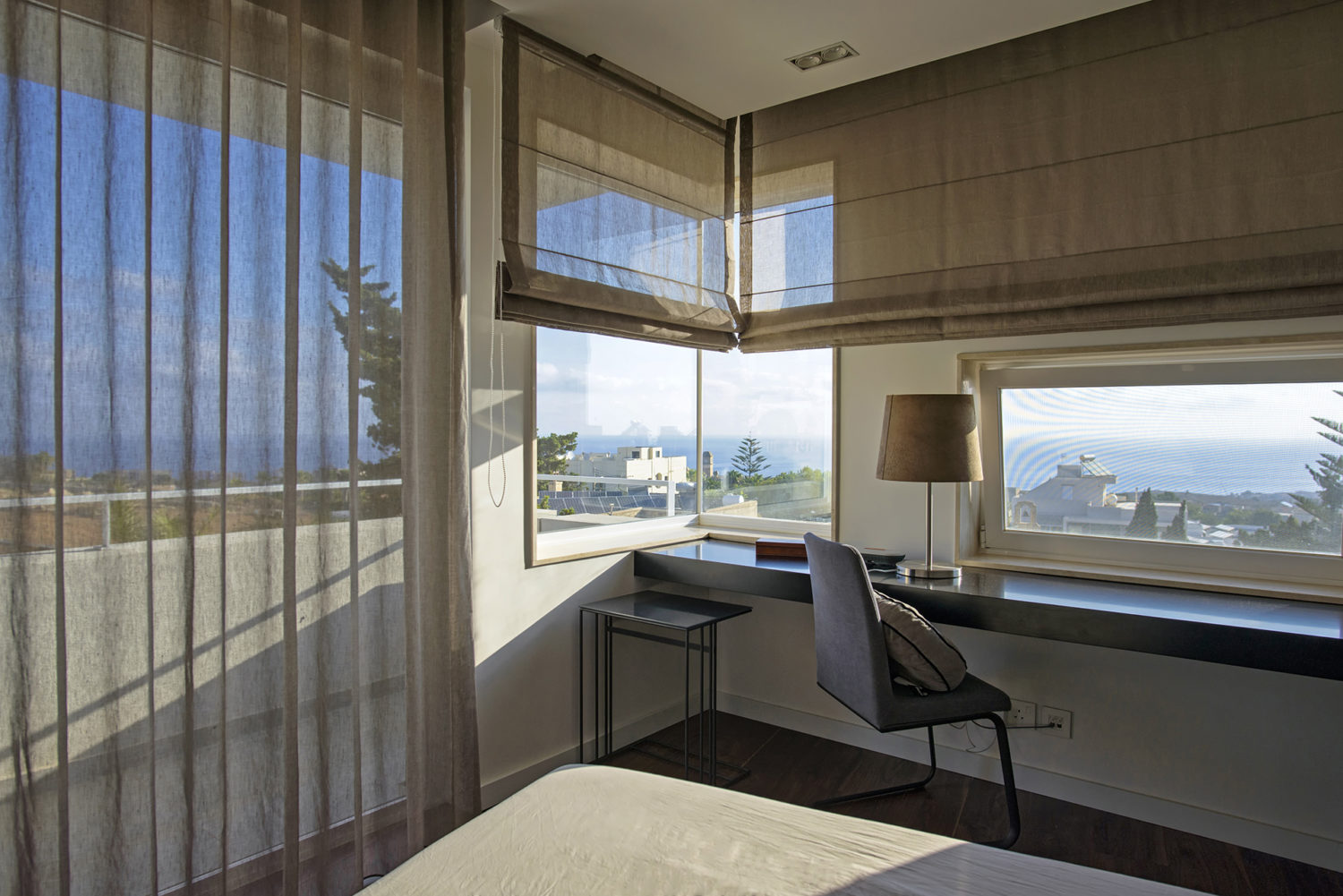24 April 2012
RESPONSE CLOUD
To some it would seem that preparing a design brief is somewhat of a design dogma. After all, having a way to define how a design is to perform before a design is prepared is entrenched in educative processes, part and parcel of recommended design methods formalised by institutions and associations in the sector, not to mention plain common sense.
But in the real fast-paced world and also in the local context when small scale has a bearing on possible effort, how much time are managers, on behalf of their businesses, and individuals for the sake of their lifestyle, ready to invest to better assure the results they want?
With close to 10 years since founding MJMDA and having analysed the potential start of over 300 projects, my finding on the matter is that about only one in 20 persons embarking on a project go beyond scratching the surface of what they really want. The attitude of leaving decisions for later pervades. That poses a real problem to consistently achieving positive usable results for end users.
Although it is true that things should be materialised a step at a time, planning an eventual integrated whole in piecemeal fashion does not work as well as a holistic approach. And that is what we believe design is also about, all round planning getting the best user experience possible, functionality, performance and emotional connectivity in a finalised and usable whole.
We like to assist clients to learn and discover what they like using a thorough methodical approach studied to expose as many issues as possible before the start of a project. We call it the Online Profiler. Even seasoned home builders and smooth business assemblers may know better what they are after, but asking the right questions still obtains more information and yields better results. MJMDA’s Online Profiler, a tool available for all to use, was launched for residences in September 2011 and for office design in February 2012.
After defining design requirements, let’s design. In the design response cloud for the materialisation of architecture, one requires having a carefully considered set of tools: cutting edge IT hardware and software technologies, a comprehensive professional team that is used to working together already, including architects, structural engineers, interior designers, building services professionals, project managers, and more; and design management processes to consistently, efficiently and as regularly as possible result in longer term success.
As lifestyles continue to become more complex, and the minimum level of understanding of what design is and what it can do for us increases, the possible brief complexity will also grow significantly. And the more cutting edge tools at hand to formulate solutions, that so far we only have limited practical access to, will also develop into highly automated computational methods exploring virtually all options possible at the limits of any epoch.


 LOGIN
LOGIN








